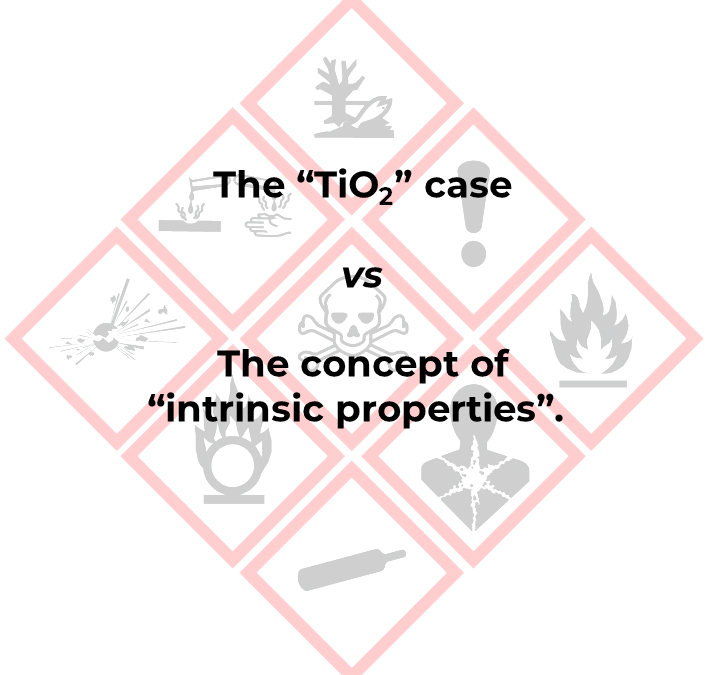On November 23, 2022, the Court of Justice of the European Union rendered a judgment annulling part of Regulation 2020/217. The cancellation concerns the harmonized classification and labeling of titanium dioxide (Carc 2, H351), including the hazard statements EUH 211 and EUH212. This decision has been the subject of numerous publications and discussions.
Beyond the specific case of TiO2, this Judgment highlights fundamental facts. Indeed, it recalls the legitimacy of the Court to control the proper respect of the rules and procedures inherent in the application of European texts, without interfering in scientific discussions. In this case, the Court considered that ECHA, and the European Commission, had made a “manifest error” by not taking into account all the data available and considered relevant. And above all, it proposes, for the first time, a legal definition of the notion of “intrinsic property”.
Intrinsic properties are the cornerstones of the main European regulations CLP (1272/2008) and REACh (1906/2007). For CLP, the classification must characterize the intrinsic properties, without further details. For REACh, the substances listed in Annex IV are exempted from registration because they present “a minimal risk due to their intrinsic properties” (article 2.7.a), Annexes VII to X aiming to characterize the intrinsic properties (section 13). It is on the basis of these same intrinsic properties that we judge the need to conduct a risk assessment, to categorize a substance as of very high concern (SVHC), or to subject it to Authorization or Restriction.
No definition of the concept of “intrinsic property” is proposed in the applicable regulatory texts. The only element we have is through the ECHA-term site (https://echa-term.echa.europa.eu/). In reference to a glossary compiling the terms associated with REACh in 2007 and 2008, it is proposed: “Characteristic of the substance which can be used to determine its future or to identify possible risks. »; not very explicit definition though, in addition to not coming from a regulatory text.
Thus, the Court of Justice, after recalling that the classification according to the CLP and the GHS, must be established on the basis of the intrinsic properties, proposes to interpret the term in its literal sense, as being the “properties of a substance, which belong to it alone”. This may seem trivial but it is fundamental. Indeed, this reminds us that it is the chemical nature of a substance that must be the subject of hazard characterization. If the latter is influenced by its physical nature, this must also be taken into account; this is notably the case of nanometric forms which modify the surface reactivity or the surface density of a substance. On the other hand, this excludes any danger induced by “properties which are not specific to the substance”. Thus, in the case of TiO2, it was estimated that the carcinogenicity was due to the insoluble dust, giving rise to chronic inflammation, independently of the chemical nature of the particles. This classification characterized an effect not attributable to the TiO2 substance, but only to its physical state. Therefore, the Court of Justice refutes any classification for TiO2 on the basis of the elements and arguments of ECHA and the Commission. This includes the possible classification under category 2 (suspected) since it would not characterize “an intrinsic property”.
This is another example that regulations, and their application, are constantly evolving. Regulatory processes tend towards more transparency and objectivity, and mechanisms exist to ensure the proper functioning of the system and compliance with the rules.
To be noted that France*, the Member-State having initiated this classification process, has appealed from this Decision. This is suspensive until the appeal is considered.
To continue the discussion, please do not hesitate to contact us by email at: contact@equitox.eu.

